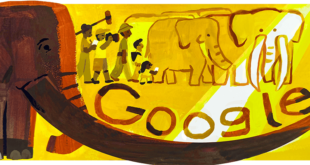International Disabled Day
Every year on December 3rd, we International Disabled Day. It is an acknowledgement to the significance of people with disabilities (PWDs). These people are a disadvantaged segment of society almost everywhere in the world.
Disability
Physical, cognitive, intellectual, mental, sensory, or developmental limitations can all manifest on International Disabled Day. It could also be the result of a combination of two or more of them. It prevents a person from displaying a natural ability to perform daily tasks.
Without a doubt, everyone in international circumstances experiences various types of deprivation and problems at various stages of their lives. The confinement of PWDs through barriers, on the other hand, is a completely different phenomenon that causes havoc and stigmatises their entire lives.
The following are some of the difficulties that people with disabilities face around international countries.
- Physical access is impeded.
- Assistive Support is in short supply.
- Discriminatory societal attitudes towards people with disabilities.
- There is a lack of educational facilities.
- Preventing disabled people from receiving benefits from services and policies.
There are numerous barriers that impede PWDs and make performing basic daily tasks practically impossible for them. Let me discuss some of the most common challenges for people with disabilities in all international situations.
Behavioural Barriers
Behavioural barriers are the most international feature of social maltreatment of people with disabilities. Some people try to obstruct the flow of daily ordinary operations by wrongdoing and ill-treatment. There are various types of obstacles.
Stereotype Barriers
So many people have misconceptions about disability. In their opinion, these are sick and poor as a result of their disability.
Discriminative Barriers
Misconceptions about disability cause quandaries, stigma, discrimination and social injustice even in international groups. The misconception about disability is that it’s a punishment for immorality, wrongdoing or misfortune.
Communicative Barriers
It refers to any type of communication barrier, such as difficulty in hearing, speaking, reading or writing. PWDs are people who are unable to use any form of communication technology.
Here are some examples of communication barriers.
- Keeping people with “sight impairment” from reading material.
- The use of small fonts or unintelligible printed devices that make it difficult for poor sight people to read.
- Discourage people from reading because they do not have a Braille or On-Screen Readability Device.
Similarly, auditory impairment is a barrier to using hearing aids.
- Video captions may be missing.
- Sign language is an example of oral communication that does not rely on manual interpretation.
Physical Barriers
Physical barriers are primarily natural or artificial structural obstacles. They may make access to any structure difficult or impossible for PWDs. This is an international phenomenon.
- Physical impediments may exist.
- Steps and stairs that make it impossible to enter a building or use a walkway.
- Mammography equipment that could assist a PWD in standing and moving is unavailable.
- Unavailability of measuring and scaling equipment that could help fit a PWD into a wheelchair or demonstrate the difficulty of stepping up.
Policy Barriers
Policy barriers are commonly associated with a lack of awareness or enforcement of laws that benefit or disadvantage people with disabilities. The following rules and regulations must be followed and implemented correctly.
- Disallowing people with disabilities to participate in or benefit from support programmes and services.
- Due to physical disability, preventing PWDs from accessing opportunities.
- Denial of suitable work opportunities to eligible PWDs so that they can find work and earn a living.
- Even on International Disabled Day, they do not receive any discounts, as many packages do on Women’s Day.
Medical Barriers
PWDs are unable to receive basic healthcare benefits from hospitals or government institutions due to medical barriers.
- PWDs are especially vulnerable to health-related issues.
- Lack of basic medical care for PWDs.
- Inability to access healthcare units and medical equipment.
- Inadequate medical examination and treatment facility.
- Difficulty in managing timing and scheduling.
- Little or no communication between a PWD and his or her clinicians.
- Misbehaviour, misunderstanding and a lack of knowledge about PWDs.
Social Barriers
These types of impediments are linked to the deteriorating social environment in which PWDs are born, grow, live, learn, work and eventually die. It refers to the social determinants of behaviour, education and health. The relevant authorities’ performance deteriorates dramatically the situation when it comes to the well-being of people with disabilities. Examples of social barriers include the following.
- They have limited access to education. Only a small percentage of people with disabilities are educated.
- They were unable to cover the cost of their education and other liabilities.
- They are less likely to find work.
- PWDs are more likely to be poor than the general population.
- People frequently dislike their company.
- Family members never seek their advice or suggestions.
- They are not included in any discussion.
- They are not allowed to make decisions.
- PWDs find it difficult to move around. As a result, there participation in social gatherings is difficult. They are frequently not invited to parties.
Transportational Barriers
PWDs do not have adequate transportation. The facilities for travelling and moving around are less. Travel to international destinations is not easy. The following are examples of transportation impediments.
- Inaccessible or inconvenient transport system, particularly for those people who are unable to drive due to vision impairment or cognitive disability.
- Travelling to remote locations may be difficult or impossible using public transportation.
Previous article by Fehmeeda Farid Khan
 FFK Blog Travel With Me
FFK Blog Travel With Me




This design is spectacular! You certainly know how to keep a reader entertained.
Between your wit and your videos, I was almost moved to start my own blog (well,
almost…) Excellent job. I really enjoyed what you had to say, and more than that, how you presented it.
Too cool.
certainly like your web site however you need to test the
spelling on quite a few of your posts. Several of them are rife with spelling issues and I to find it very troublesome to inform the reality however I’ll surely come back again.
It’s awesome to visit this web site and reading
the views of all colleagues regarding this post, while I am also eager of getting know-how.
I visit day-to-day some sites and blogs to read content, but this webpage offers feature based posts.
Awesome article.
I think the admin of this web page is actually working
hard in support of his web page, since here every data is quality based material.
This blog was… how do I say it? Relevant!! Finally I’ve found something that
helped me. Appreciate it!
You actually make it seem so easy with your presentation but I find this matter
to be actually something that I think I would never understand.
It seems too complex and extremely broad for me. I’m looking forward for your next post, I’ll try to get the hang of it!
For most up-to-date information you have to go to see web
and on world-wide-web I found this site as a most excellent web site for most recent updates.